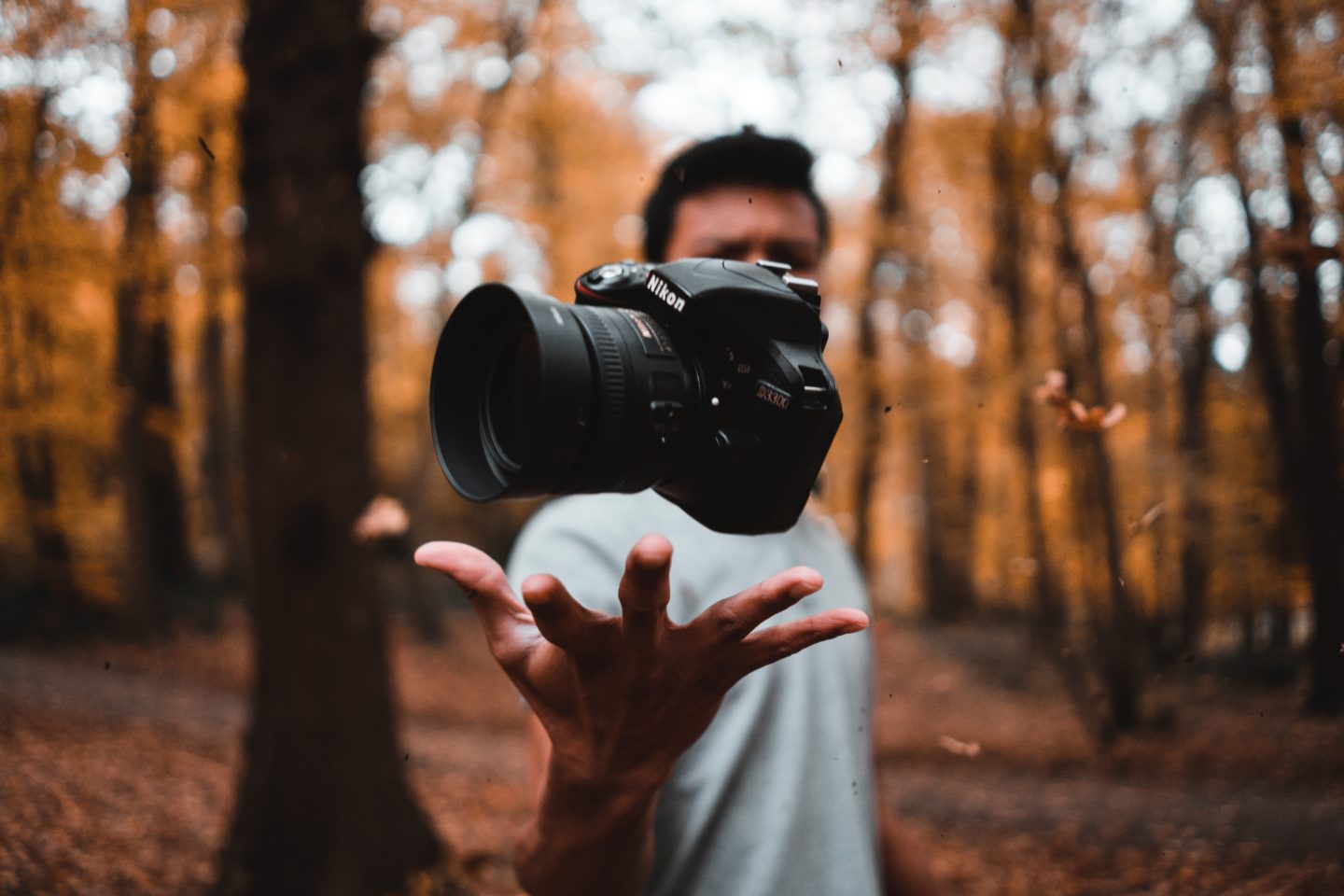
There are many tools to help improve the quality of your photography. To create compelling images you have to understand how your audience looks at it. The beautiful thing about this composition is that you are in control over leading the viewer’s eyes through the picture.
Mastering your composition helps you tell a better story, draw attention and prevent monotonous images. To do so, here are 6 tips that allow you to create more creative and appealing images:
Rule of Thirds
Let’s start here: Which of the two images do you like better?
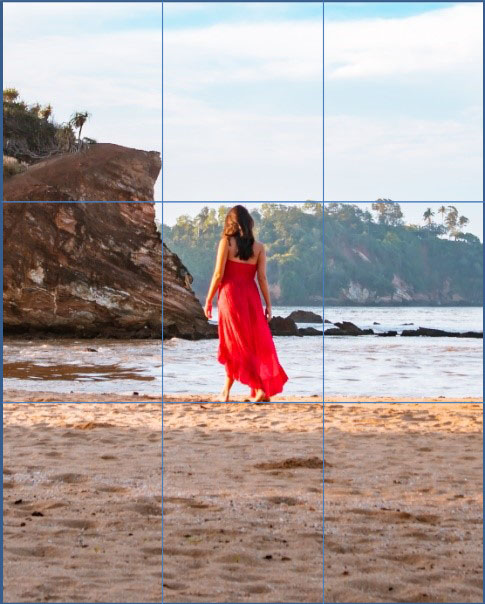
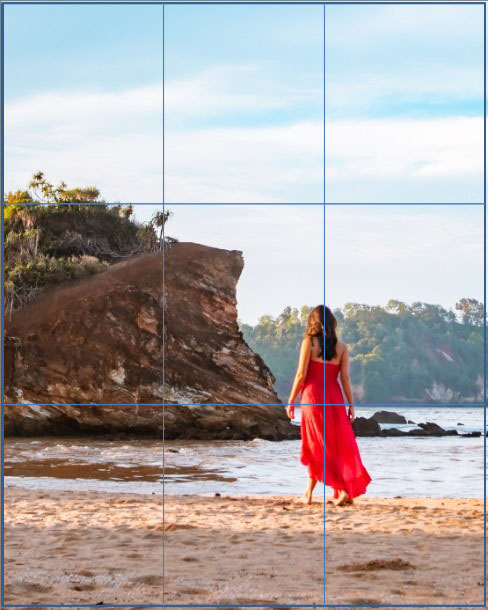
Most people tend to place their subject straight in the middle of an image. In many situations, this is completely fine, but often your image improves if you choose to off-center your subject.
There is a couple things the rule of thirds does. For one, It creates more space to wander through the image. You allow a better relationship between your subject and the background, which often can be just as important. And you create emphasis on the subject, which makes it clearer where to look.
The rule of thirds is a grid that helps with compositing your image. The grid is thirds of 3 blocks to off-center your subject. For instance, you could use the 3 blocks in the bottom row to line up your horizon. Or you can use the one of the intersecting lines to position your subject, like done in the image bellow.
Golden spiral:
The golden spiral is an incredible tool to help understand and control the journey of someone’s eyes through your photograph.
The spiral is build out of mathematically calculated blocks that increase in size by the golden ratio. The center of the image starts in the corner smallest rectangle, from where you can draw a spiraling line all the way through to the corner of the largest rectangle. This will create a natural path in which your eyes will be led.
In practice you will have to imagine the spiral while looking through your view-finder, which can be a little bit complicated at first. The way to do this is by finding your primary subject, then picture a spiral being emitted from that point. Throughout the spiral you will place different visual elements which your eyes will follow, until they meet the subject to rest.
To demonstrate the golden spiral in action I want to show you this image, taken by Thomas Heaton, landscape photographer and youtuber from the UK.

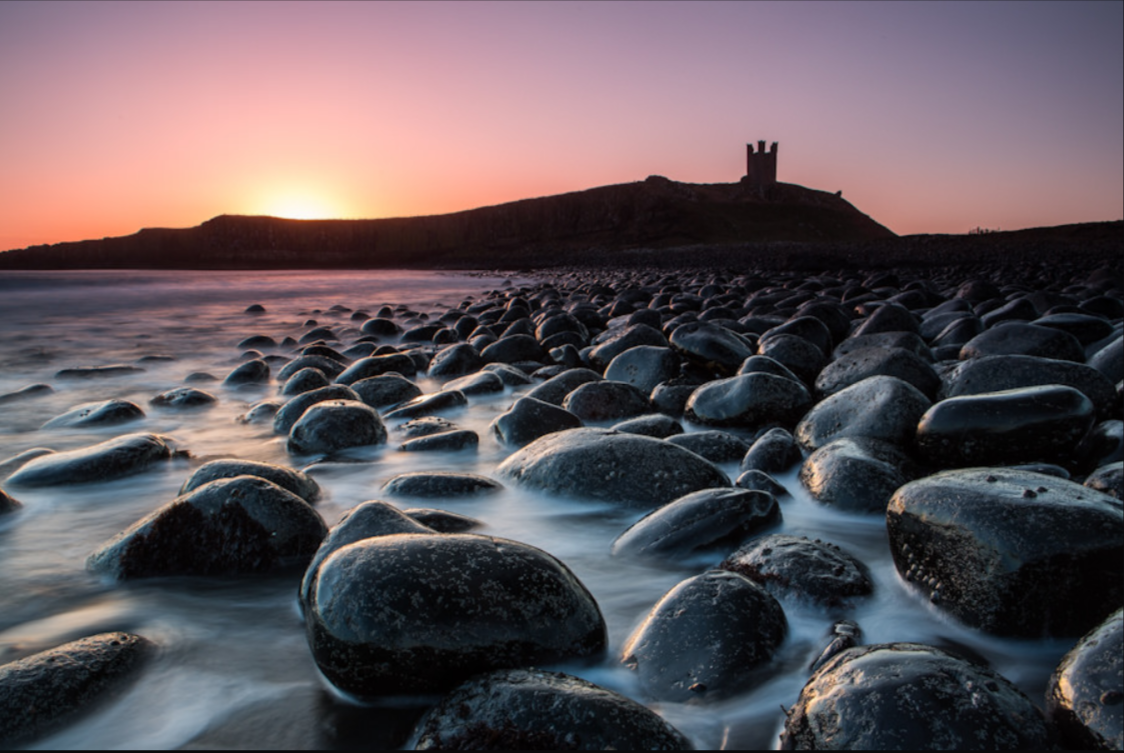
The main subject of this image is Dustanburgh castle, which can be seen as a silhouette in the background. By adding different elements in the background and foreground, Thomas created a path which your eyes will follow. First the sunset, which shines it’s last light on the rocks in the foreground. The rocks add depth to the image and a path to bottom half of the image, but finally your eyes will rest on the castle.
3. Vantage points:
Imagine Thomas took the picture used above, from a standing point of view instead from low to the ground. Do you think the image would have been as good as it is now?
An image that has been shot a million times before, can instantly become incredible if you are able to find unique vantage points. Laying on the ground can look a little bit stupid from a bypasser’s point of view, but it can increase the quality of your image.
For instance, see the following image of the Golden Gate Bridge, It’s a great picture, but it probably feels like you’ve already seen it a dozen times.

Now, take the same bridge, but add an extra element to the image from a completely different vantage point. The image that before was somewhat generic, now has become something you might have never seen before.

4. Perspective:
Perspective is an important part of creating better images as it can turn your image good or bad. See perspective as a way to show the size of your surroundings relative to the subject. This way you can make the environment look massive relative to your subject, or make your subject look bigger/taller within the environment.
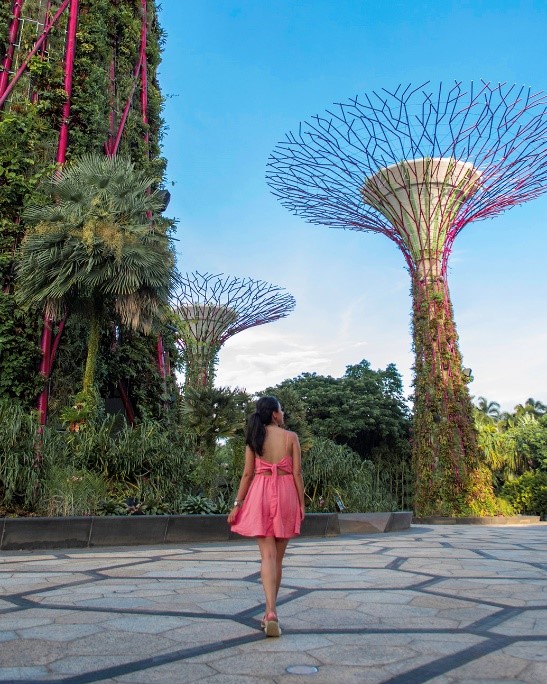
The Singapore Gardens by the Bay is a pretty impressive sight to witness. The “trees” in the Supertree Grove are very large, and to show that on an image, you need three things.
- Place a second subject in the image for reference, this can be a person as in the image above, but can also be anything else.
- Try to be as low to the ground as possible, or be far away from your subject.
- And this one is situational when your subject is close to you; but a wide angle lens for your camera. When I took the pictures in Singapore I wish I had one, as I wish I could show even more of the tree on the left.
When shooting with a person, it is good to know that your position has effect on the appearance of your model. So when you are above eye-level you will make the person you are photographing seem smaller. While if you are lower to the ground, they will seem taller. This is why I often stay below or at eye-level, but not above. Of course, unless you want to show the grand scale of an environment and you have a drone.
Leading Lines
Leading lines help lead your eyes through an image in a very obvious manner. This technique draws your attention to the lines which lead to the main subject of the image.
You can use for instance train tracks such as in the image below. Or you can use bridges, roads, handrails, fences, and anything else that help you lead the viewers eyes from point A to B.
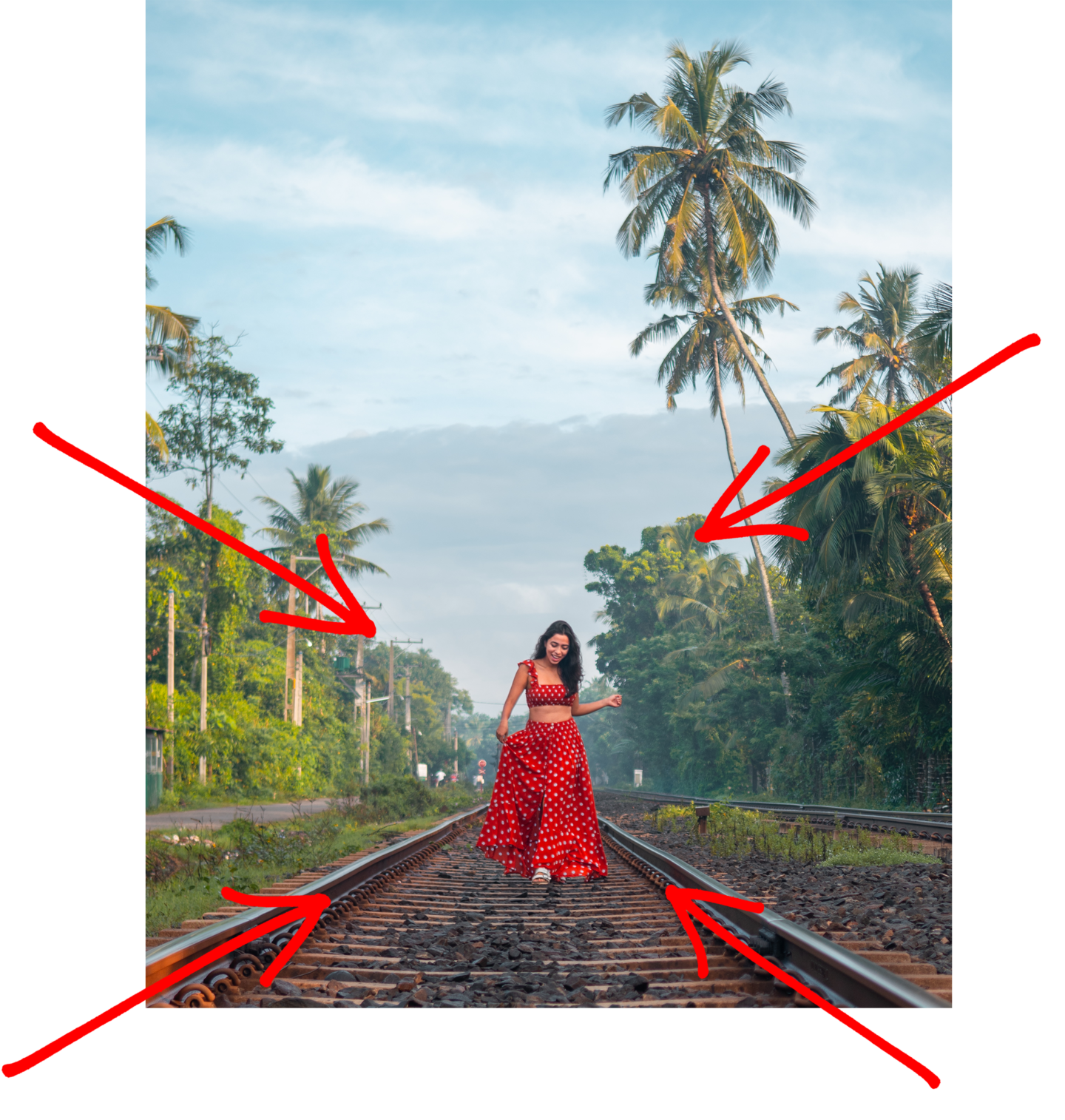
6. Framing your frames
Another very powerful tool for a more interesting picture, is by framing your point of interest. Not only is this a creative way to show the environment you are in and like leading lines, a really obvious but great way to point out the subject(s).

You could use a single frame, like the image above, to separate the foreground from the background and create an interesting composition. Another thing you could do is to use multiple frames, and use them to highlight multiple subjects.
Hope you enjoyed today’s tutorial! If you have any questions write them down in the comments below, we will be getting back to you as soon as possible! More blog tutorials coming up every week, you can also check them out on our Instagram Stories @yololetstraveltheworld!
For more tips about improving your photography skills and instagram tips, subscribe to our blog. Every Sunday we will be posting a new blog that will help you improve your social media skills!
Subscribe to get notified every time we post a new blog!
